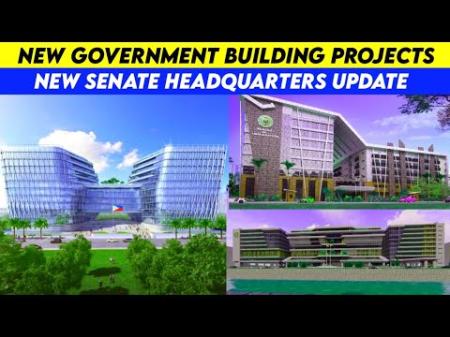PH Oil and Gas Deposit in West Philippine Sea | China Wants to Control
#southchinaseadispute #westphilippinesea #oilandgas
The U.S. Energy Information Agency estimates that the South China Sea holds about 190 trillion cubic feet of natural gas, and 11 billion barrels of oil, in proved and probable reserves. Most of which lie along the margins of the South China Sea, rather than under disputed islets and reefs.
While the U.S. Geological Survey in 2012, estimated that there could be another 160 trillion cubic feet of natural gas, and 12 billion barrels of oil undiscovered in the South China Sea. Beijing’s estimates for hydrocarbon resources under the sea are considerably higher but still modest in relation to China’s overall demand— where the country’s oil consumption in 2018 is expected to top 12.8 million barrels per day.
This year, the Washington-based Asia Maritime Transparency Initiative reported that several countries are pursuing new oil and gas development projects in those contested waters, which, the organization notes, could become a flashpoint in the disputes.
Between 2018 and 2021, there were numerous standoffs between China, Vietnam, the Philippines, and other Southeast Asian countries over drilling operations in disputed areas of the South China Sea, and fears are building that even more severe confrontations lie ahead.
Fresh conflicts in the South China Sea may arise as claimants – excluding the Philippines – push ahead with oil and gas projects in areas Beijing claims, according to a new report. Data from the US-based Asia Maritime Transparency Initiative, detailed claimants’ new offshore projects, many of which lie inside China's sweeping nine-dash line claim, including sites where confrontations previously took place.
According to Think Tank, With the China Coast Guard increasing the frequency of patrols across disputed waters, the prospect of confrontation between Chinese law enforcement and oil and gas operators at many of these locations is high. China, Vietnam, Malaysia, and Indonesia have moved forward with their energy exploration and development projects, while the Philippines continues to suspend all such ventures in contested waters — a policy adopted in 2014.
According to the report, Manila is the only claimant not developing hydrocarbon resources on the portions of its continental shelf covered by China’s nine-dash line. Manila briefly permitted exploration at Reed Bank last spring, but quickly shut it down amid challenges from the China Coast Guard.
The Philippines has a reasonable expectation that China will more forcefully block new work in the Reed Bank than it does elsewhere in the South China Sea.
Without access to more promising prospects, Philippine operators have turned to redeveloping the Cadlao oil field, an old concession that sits outside of China’s nine-dash line claim, and that last produced oil in the early 1990s. It noted, that Cadlao currently has an estimated five million barrels in reserves — much smaller than Reed Bank’s estimated five billion barrels of oil and 55 trillion cubic feet of gas.
The Recto Bank (also known as the Reed Bank), is the major gas exploration prospect that is being placed in the middle of a menacing diplomatic strife in the West Philippine Sea.
Recto Bank, a significant feature for the Philippines holding immense potential for the country’s energy security and economic growth, stands as a focal point in this rising concern over China’s recent behavior. China has been critical of the Philippines’ growing security ties with the US, calling the United States a threat to regional peace after the Marcos government gave it increased access to military bases under their 2014 Enhanced Defense Cooperation Agreement.
The Department of Energy has conveyed to Congress that President Ferdinand Marcos Jr. has given the go-signal to oil and gas exploration and drilling activities in the country, including at the disputed waters of the West Philippine Sea. The Recto Bank, which is covered by Service Contract 72 previously issued by the Department of Energy, is the major gas exploration prospect that is being placed in the middle of a menacing diplomatic strife in the West Philippine Sea.
The Philippines has been lagging behind Southeast Asian peers when it comes to extracting indigenous oil and gas resources - as neighboring countries like Indonesia, Malaysia, Thailand, and Vietnam have been successful in transforming their state-owned oil companies as petroleum powerhouse, not just in the region, but also on the broader global sphere.
Join this channel to get access to perks:
/ @aseananalytics
#southchinaseadispute #westphilippinesea #oilandgas
The U.S. Energy Information Agency estimates that the South China Sea holds about 190 trillion cubic feet of natural gas, and 11 billion barrels of oil, in proved and probable reserves. Most of which lie along the margins of the South China Sea, rather than under disputed islets and reefs.
While the U.S. Geological Survey in 2012, estimated that there could be another 160 trillion cubic feet of natural gas, and 12 billion barrels of oil undiscovered in the South China Sea. Beijing’s estimates for hydrocarbon resources under the sea are considerably higher but still modest in relation to China’s overall demand— where the country’s oil consumption in 2018 is expected to top 12.8 million barrels per day.
This year, the Washington-based Asia Maritime Transparency Initiative reported that several countries are pursuing new oil and gas development projects in those contested waters, which, the organization notes, could become a flashpoint in the disputes.
Between 2018 and 2021, there were numerous standoffs between China, Vietnam, the Philippines, and other Southeast Asian countries over drilling operations in disputed areas of the South China Sea, and fears are building that even more severe confrontations lie ahead.
Fresh conflicts in the South China Sea may arise as claimants – excluding the Philippines – push ahead with oil and gas projects in areas Beijing claims, according to a new report. Data from the US-based Asia Maritime Transparency Initiative, detailed claimants’ new offshore projects, many of which lie inside China's sweeping nine-dash line claim, including sites where confrontations previously took place.
According to Think Tank, With the China Coast Guard increasing the frequency of patrols across disputed waters, the prospect of confrontation between Chinese law enforcement and oil and gas operators at many of these locations is high. China, Vietnam, Malaysia, and Indonesia have moved forward with their energy exploration and development projects, while the Philippines continues to suspend all such ventures in contested waters — a policy adopted in 2014.
According to the report, Manila is the only claimant not developing hydrocarbon resources on the portions of its continental shelf covered by China’s nine-dash line. Manila briefly permitted exploration at Reed Bank last spring, but quickly shut it down amid challenges from the China Coast Guard.
The Philippines has a reasonable expectation that China will more forcefully block new work in the Reed Bank than it does elsewhere in the South China Sea.
Without access to more promising prospects, Philippine operators have turned to redeveloping the Cadlao oil field, an old concession that sits outside of China’s nine-dash line claim, and that last produced oil in the early 1990s. It noted, that Cadlao currently has an estimated five million barrels in reserves — much smaller than Reed Bank’s estimated five billion barrels of oil and 55 trillion cubic feet of gas.
The Recto Bank (also known as the Reed Bank), is the major gas exploration prospect that is being placed in the middle of a menacing diplomatic strife in the West Philippine Sea.
Recto Bank, a significant feature for the Philippines holding immense potential for the country’s energy security and economic growth, stands as a focal point in this rising concern over China’s recent behavior. China has been critical of the Philippines’ growing security ties with the US, calling the United States a threat to regional peace after the Marcos government gave it increased access to military bases under their 2014 Enhanced Defense Cooperation Agreement.
The Department of Energy has conveyed to Congress that President Ferdinand Marcos Jr. has given the go-signal to oil and gas exploration and drilling activities in the country, including at the disputed waters of the West Philippine Sea. The Recto Bank, which is covered by Service Contract 72 previously issued by the Department of Energy, is the major gas exploration prospect that is being placed in the middle of a menacing diplomatic strife in the West Philippine Sea.
The Philippines has been lagging behind Southeast Asian peers when it comes to extracting indigenous oil and gas resources - as neighboring countries like Indonesia, Malaysia, Thailand, and Vietnam have been successful in transforming their state-owned oil companies as petroleum powerhouse, not just in the region, but also on the broader global sphere.
Join this channel to get access to perks:
/ @aseananalytics





